Get Even First Look: Quantum Break meets Inception
We’ve seen gameplay presentation of this intriguing game. It seems that quite an unique shooter is on its way.
- A shooter developed by The Farm 51 (Deadfall Adventures);
- Impressive graphics created with the help of environment scanning technology;
- Two seperate campaigns;
- An interesting mix of singleplayer and multiplayer;
- Story revolving around time reversal and mind control;
- Support for Oculus Rift and Project Morpheus.
It began conventionally, as I was treated to a previously unreleased teaser concentrating mainly on, you’ve guessed it, technology. However, the next thing I saw on the screen left me quite astounded - a first actual presentation of gameplay has begun. Within the next several dozen minutes I got to know more about the mechanics, learned a few plot details and got a closer look at several solutions, which the studio believes, will surprise the players. Still, the vital question concerning Get Even, the question of ‘what is real?’ remains to be answered. However, after what I have seen, I am certain of one thing – this is an unusual game.
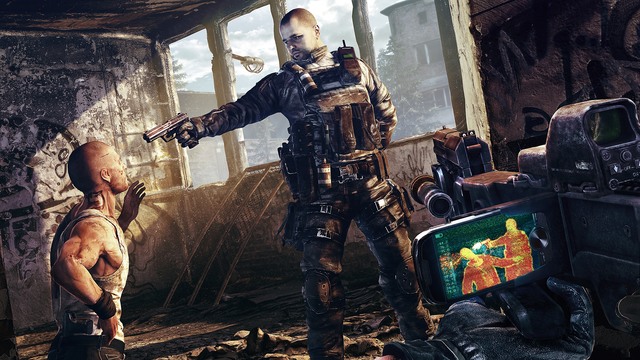
We begin the tested fragment in a environment greatly reminiscent of the first Saw movie. Our hero, a not exactly law-abiding detective simply called Black, under unknown circumstances, awakens in a dark cellar with nothing but a blackboard. Any attempt of leaving the uncomfortable holding place is doomed to fail, as the only door has been fitted with a deadly mechanism which reveals its power as soon as we make a step too close to the exit. As of what is the reason behind this bizarre situation, we will learn through not one, but two campaigns. The first one will be played through in Black’s shoes, concentrating on detective elements, gathering evidence and tactically-heavy combat. While in the second campaign, we will ‘take control of an another character – a wheelchair-bound handicap who spends most of his time in virtual reality breaking into and controlling human minds, involving the one belonging to Black. The story itself however, is still being crafted in this early stage and many details may change – let’s concentrate on what actually happened on-screen.

Having nothing else to do, we approach the aforementioned blackboard containing few seemingly random photographs. As it is revealed later, the photos are actually connected, as they represent fragments of our past, which will eventually form a more or less cohesive whole. This however is not the most peculiar thing. What is even more uncanny, is the fact that our hero is able to go back in time and actively take part in the past events, changing the course of action. If that was not enough, those events can look different – due to the previously mentioned handicapped character who thanks to his unique abilities and devices, constantly tries to mess with our head. A chance to try out this enigmatic (and initially puzzling) concept comes soon after. By gazing at a picture we travel back in time to a crime scene where we failed to identify one of the victims. The newly made observations, although not leading us to discovering the identity of the shot man named Johnny, open up new threads accessible for exploration from the blackboard.
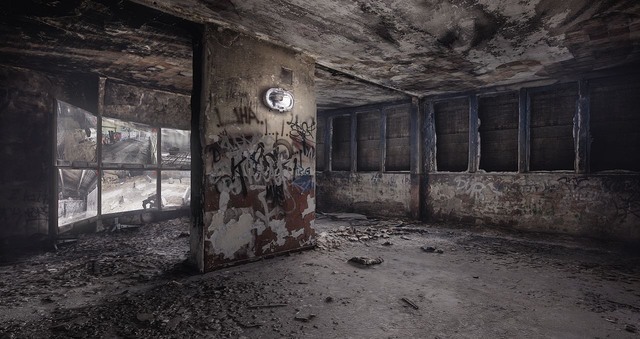
That way, the previously unlocked option allows us to visit the same place, but minutes earlier. The shooting, despite being especially bloody, is still taking place, and the killing shot is seconds away from being fired. We don’t take part in the sequence personally and the developers attributed it with parameters of heavily slowed time, so the entire sequence brings to mind a conventional cutscene which we can view from different angles. In that case our task is relatively simple: we need to take a picture of Johnny before the ‘accident’ occurs, which will help us in uncovering another threads. The trick is, that in some of those sequences we are given a severe time limit. Acquiring evidence (taking pictures, scanning) with our special smartphone does not usually proceed under preferable conditions.
Despite what we have seen up to this point, Get Even is not only about hyperrealistic depiction of locations. With similarly great care, the areas around the buildings, which could be accessed numerous times, were crafted. In spite of most of the surroundings being incomplete, those with their footing finished manage to impress.

By such events, revealed notes and uncovered documents, we will get to know more about the plot and the reasons why Black and his memory-controlling adversary are engaged in conflict. However, Get Even will not focus only on experiencing the plot and exploiting the idea of returning to memories – as expected of a FPS we will see quite a lot of combat sequences. Apart from few intriguing confrontations with the use of time stopping mechanic, a great deal of classic encounters awaits us. Supposing that when using classical guns and rifles we can actually speak of a standard shooter game. The moment during the demo when the protagonist got his hands on the CornerShot (one of the more interestingly designed guns in recent years), everything changed. This special firearm allows the user to accurately shoot from any angle, while remaining hidden in cover. During the presentation this certain weapon was used extensively, underlining the fact that most of the firefights in Get Even will work in a similar manner – tactically, at a moderate pace giving enough time to think and aim.
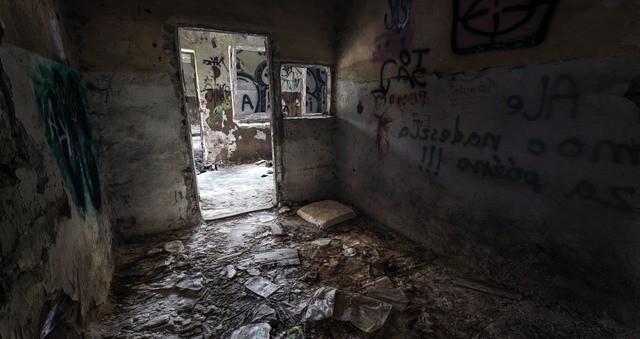
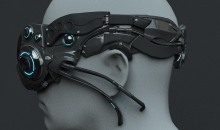
Developer’s decision to go in a direction of a more balanced and slow-paced combat is not merely a whim. It is a mindful move aiming to adjust the game to devices such as Oculus Rift and Morpheus. Using a VR set we are simply unable to constantly make sudden movements, typical for modern shooters.
This does not mean that battles will not engage us emotionally. Even though the tested version was for obvious reasons in an offline mode, in the final version of the game, the gamers will be offered online play. However, in comparison to the majority of other modern titles, in Get Even…we will not even know that someone has joined us! The entire mechanism will depend on uninhibited pairing of players simultaneously playing the opposite campaigns. What does that mean in practice? While playing as Black potentially every opponent can be controlled by an another player. In other case, we will take control of guards, soldiers etc. intended to kill Black (controlled by AI or an another player). I have to admit, the idea sounds captivating.
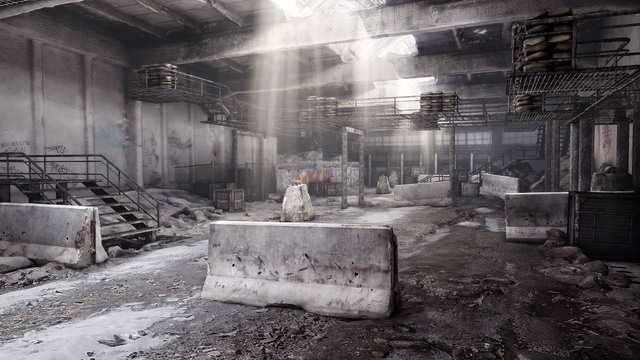
Unfortunately, after a few dozen minutes, the presentation had to come to an end. All of the game’s elements that I have got to experience, awoke incontrollable awe, and after additional scrutiny, it’s hard to ignore the amount of work and innovative ideas the team at The Farm 51 has put in their game. Will they be able to successfully implement all of those elements into the rest of the game? Get Even has proven at gamescom that it can aspire to be something more than just a technological masterpiece. One cannot have enough of convoluted and niche games. We can only hope and keep our fingers crossed that the developers were not over ambitious.